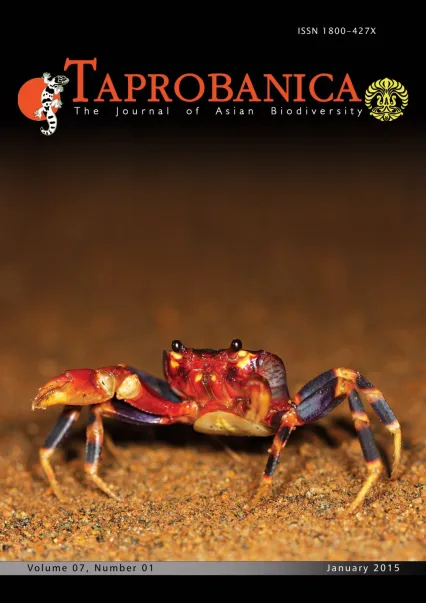

v7i1.160
Volume 7 | Number 1 | May 2015
Short Note
ISSN: 1800-427X (print)
eISSN: 1800-427X (online)
DOI:10.47605/tapro.v7i1.160
Submitted date: 18 July 2014
Accepted date: 14 October 2014
Published date: 19 January 2015
Pp. 54–55.
Sarus Crane (Grus antigone) egg is hatched by a domestic hen
M. Sandeep, P. Srinivas, B.L Narayana* & D. Adimallaiah
*Corresponding author. E-mail: narayana.laxmi8@gmail.com
Nehru Zoological Park, Hyderabad, Telangana, India, has been involved in captive breeding programmes, including eggs of silver pheasant (Lophura nycthemera), red jungle fowl (Gallus gallus), kalij pheasant (Lophura leucomelanos) and golden pheasant (Chrysolophus pictus) incubated by domestic hen (Gallus gallus domesticus). It proved successful in almost all cases. Here, we attempted to do the same for the sarus crane (Grus antigone), which is listed in Schedule I of the Wildlife (Protection) Act 1972, vulnerable species on IUCN Red List 2012, Appendix II of CITES, and Appendix II of the Convention on Migratory Species. It is the largest bird in India and the tallest flying bird in the world.
Section Editor: Varadharajan Gokula
eISSN: 1800-427X (online)
DOI:10.47605/tapro.v7i1.160
Submitted date: 18 July 2014
Accepted date: 14 October 2014
Published date: 19 January 2015
Pp. 54–55.
Sarus Crane (Grus antigone) egg is hatched by a domestic hen
M. Sandeep, P. Srinivas, B.L Narayana* & D. Adimallaiah
*Corresponding author. E-mail: narayana.laxmi8@gmail.com
Nehru Zoological Park, Hyderabad, Telangana, India, has been involved in captive breeding programmes, including eggs of silver pheasant (Lophura nycthemera), red jungle fowl (Gallus gallus), kalij pheasant (Lophura leucomelanos) and golden pheasant (Chrysolophus pictus) incubated by domestic hen (Gallus gallus domesticus). It proved successful in almost all cases. Here, we attempted to do the same for the sarus crane (Grus antigone), which is listed in Schedule I of the Wildlife (Protection) Act 1972, vulnerable species on IUCN Red List 2012, Appendix II of CITES, and Appendix II of the Convention on Migratory Species. It is the largest bird in India and the tallest flying bird in the world.
Section Editor: Varadharajan Gokula
- List of Articles & Contents





